Thursday November 6, 2025
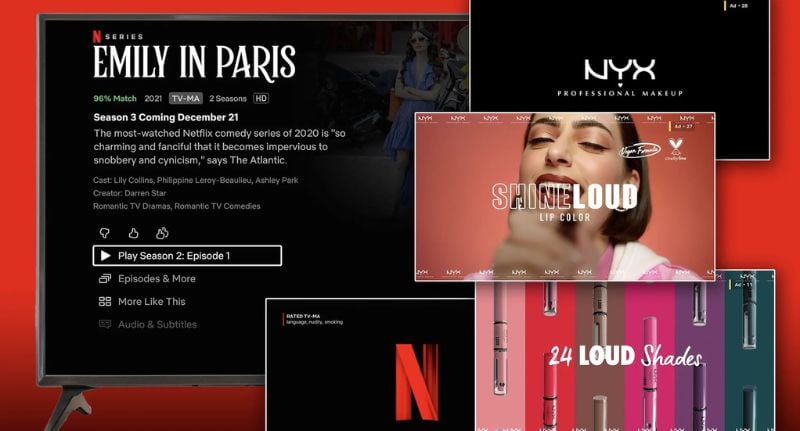
Netflix moves to new ad metric as platform hits 4 millions Aussie viewers
In streaming, everyone wants clean lines of sight. And as Netflix wraps season three of its ads business and kicks off season four, the company has pinned its flag to a viewer-based metric, declaring 4 million Monthly Active Viewers (MAVs) in Australia and more than 190 million globally.
“We’re instituting a more complete metric,” Netflix said, noting the shift from profile counts to MAVs aligns ad reach with actual people in the room – whether they’re watching Stranger Things, Emily in Paris, WWE or next month’s NFL Christmas Gameday.
The company defines a MAV as someone who watches at least one minute of ads per month, multiplied by estimated household audience size from first-party research.
It’s Netflix-speak for an old truth: impressions only matter if there are eyeballs attached.
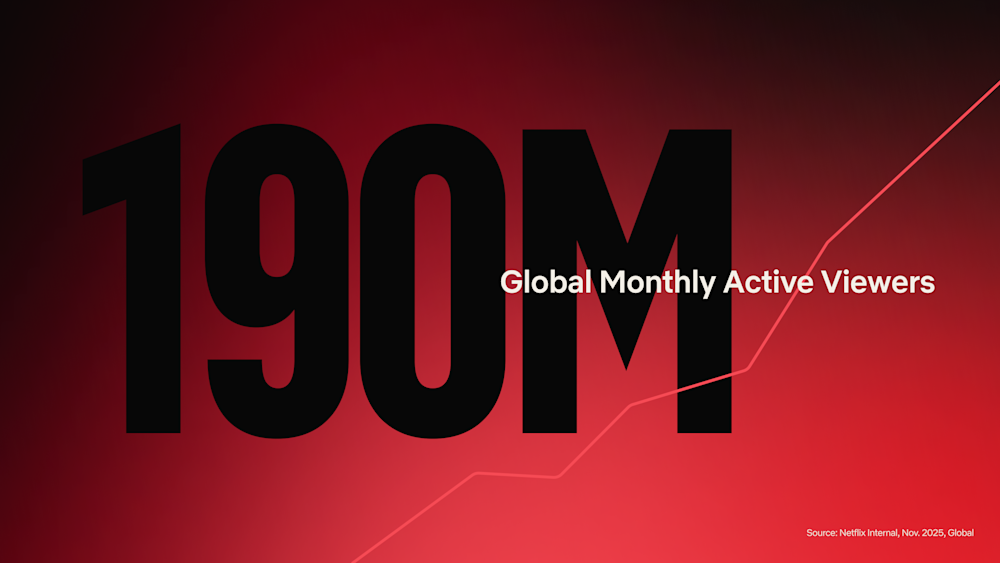
From profiles to people
Advertisers have been pushing for transparent, interoperable streaming metrics, something that mirrors the way third-party firms measure popularity, but can scale as inventory grows across live sport, tentpoles and everyday streaming.
Netflix says the MAV framework does that job.
The pivot comes after conversations with partners who wanted “an accurate, clear, and transparent representation of who their ads are reaching.”
Australian buyers will read it as Netflix staking out a middle ground, more person-based than household account models, less niche than pure device counts, and signposting an industry gap that hasn’t closed since streaming unbundled TV measurement.
Ad tech muscle and Australian pipelines
On the tools side, Netflix says its Ads Suite has now rolled out across all 12 ad-supported markets, offering programmatic access via Amazon, AJA, Google Display & Video 360, The Trade Desk and Yahoo DSP.
For Australian clients, LiveRamp support remains a meaningful unlock, with audience onboarding now available locally alongside Brazil, Canada, France, Germany, Italy, Japan, Mexico, Spain and the UK.
The platform is also testing a planning API designed to plug into media agency tools and serve real-time demographic forecasting.
That API is live in the US now and will land globally in 2026, timed neatly to rising local spend cycles and the next round of sports rights heating up here.
Add in-market audiences, covering categories like luxury vehicles, travel and dining, and Netflix is signalling it wants to sit deeper in performance and brand hybrids, not just premium reach buys.
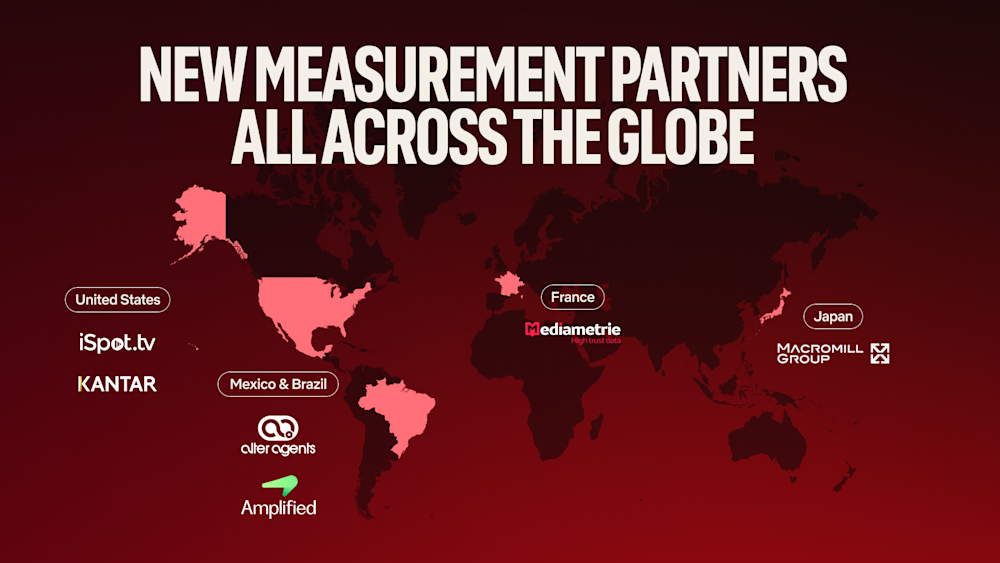
Creative formats: more modular, more interactive
Format innovation is another swing.
Netflix confirmed interactive and modular ads are now being tested in the US and Canada, letting creative adapt based on viewing behaviour. Early results are “encouraging,” with global rollout slated by Q2 2026.
That’s a subtle but important marker.
Creative flexibility has historically been where streaming bumps up against TV convention, tight timelines, templated assets, variable compliance rules. If Netflix can scale interactivity elegantly, it shifts expectation for everyone.
Proof points and live-event heat
Measurement partnerships continue to widen: Médiamétrie in France, Macromill in Japan, Amplified Intelligence and Alter Agents in Latin America, and expanded Brand Lift via Kantar and iSpot in the US, plus AudienceProject across EMEA.
Live ad insertion – tested with WWE titles – is now set for NFL Christmas Gameday across the US, Canada, UK, Germany, Mexico and Brazil, with wider rollout through 2026. It’s hard not to see that as a pre-read for the evolving Australian sports landscape too.
Closer to home, buyers will be watching whether MAV grows beyond 4 million as Netflix sharpens live event ambitions, leans into gaming IP, and banks on franchise heat from Stranger Things and Emily in Paris.
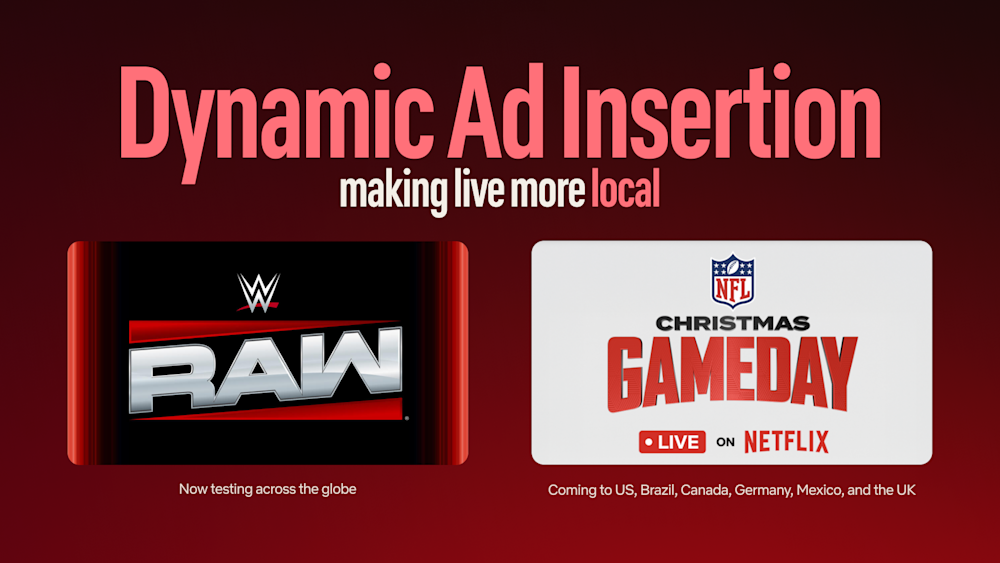
The bottom line
It’s Netflix saying: we’re past proof-of-concept. We’re building for scale, accountability and creative elasticity – and we want your planning dashboards to speak our language.
And yes, 4 million AVOD Australians is officially the number to file away for Q4 planning decks.
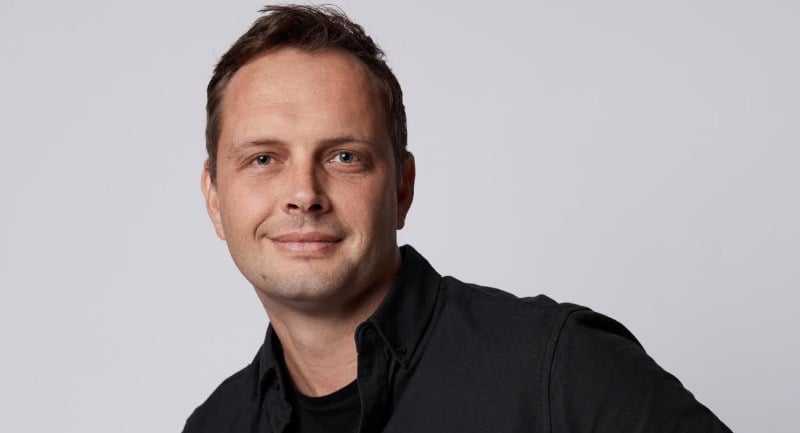
Jeremy Hogg joins M+C Saatchi Group as national ECD
M+C Saatchi Group ANZ has appointed Jeremy Hogg as national executive creative director, bolstering the group’s creative leadership across Australia and New Zealand.
Hogg joins from Howatson+Company, where he spent four years helping to build the independent agency into one of Australia’s most awarded.
During that time, he led campaigns for brands including Domain, TK Maxx, Qantas, Honda and UNSW, with work recognised for both creativity and effectiveness.
Prior to Howatson+Company, Hogg was creative director at CHEP Network, where he worked with clients such as Samsung and Genea, the latter becoming one of Australia’s most awarded brands under his creative direction.
He has also held senior roles at DDB, Y&R, Marcel Sydney, The Monkeys and Havas Host.
“I’m thrilled to be joining Emma, Dani and the team at an exciting time for the agency,” said Hogg. “M+C Saatchi has an amazing legacy of fostering great people, clients and work. I can’t wait to help shape what’s next. It’s going to be fun.”
In his new role, Hogg will oversee the agency’s creative vision and collaborate with the leadership team to drive creative excellence, growth and cohesion across the network.
“Jeremy’s skill and spirit are perfect for helping to steer us through our exciting next,” said Emma Robbins, M+C Saatchi Group ANZ chief creative officer.
“He’s a little bit Lando Norris, a little bit Jessica Watson. We’re very excited he’s here, and about what’s ahead.”
Hogg’s work has been recognised at major international award shows including D&AD, Cannes Lions, Clios, AWARD, Spikes Asia, One Show, LIA, Webbys and Effies. He has also served on juries at many of these events, including Cannes LSaatchiM+C Saatchi Group ANZions, Spikes Asia, Young Lions and AWARD.

Podcasters now as trusted as journalists and twice as persuasive
Podcasting has officially entered its trust era.
According to Acast’s new Podcast Pulse 2025 report, the medium’s influence is no longer defined by audience size, but by resonance – the rare combination of attention, authenticity and action.
The global study of more than 2,600 consumers across 10 markets, including Australia, found that podcasts now reach two-thirds of listeners each month, with attention levels peaking locally at 71%. When video podcasts are included, that reach jumps by another 39%.
But the data point that’s both alarming and encouraging? Podcasters and journalists are now equally trusted for product recommendations – 33% each – outranking YouTubers, influencers and celebrities.
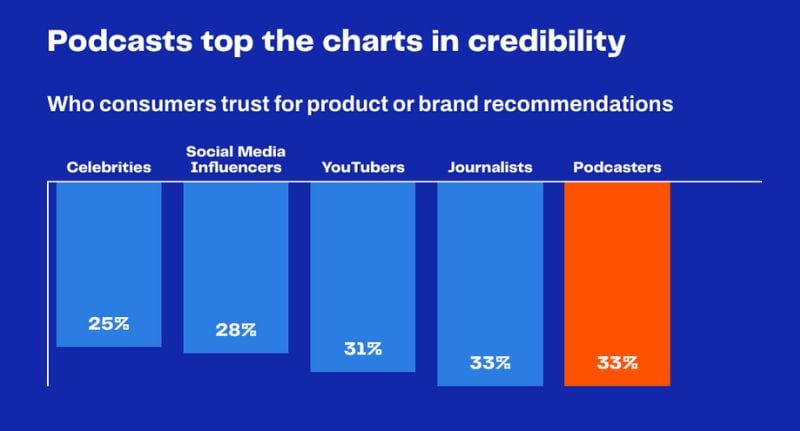
Trust and transformation
Listeners describe podcasting as a uniquely personal medium:
• 79% say it feels like a one-to-one conversation;
• 84% say a podcaster has changed their mind about something;
• Three-quarters don’t see podcasters as “influencers” at all.
Instead, they see hosts as genuine, honest and captivating – traits that have helped podcasting overtake more traditional media channels as the most trusted format for storytelling.
For Walkley Award-winning investigative reporter and podcaster Richard Baker, that finding underscores both the opportunity and the risk.
“It underscores the connection, right? That’s why that trust is there,” Baker told Mediaweek. “But where I think there’s a question mark, or a problem, is that most of these people aren’t operating as traditional journalists. They’re not playing by the news rules.”
Baker says that what’s happening in podcasting is a mirror to the broader media shift. It’s one where intimacy and personality have overtaken institutional authority.
“It’s really interesting for those of us who come from traditional journalism backgrounds. The trust and perception that’s been placed in podcasts, and particularly those influential hosts. They connect and understand their audience better than a lot of mainstream media newsrooms,” he said.
Still, that connection brings new challenges for information integrity.
“Where it is concerning is: are those people who say they have such trust in podcasting verifying the information they’re hearing? Even with mainstream media, people need to make sure those facts come from authoritative places,” Baker said.
“That data is both a positive and a potential concern, and says a lot about the medium”.
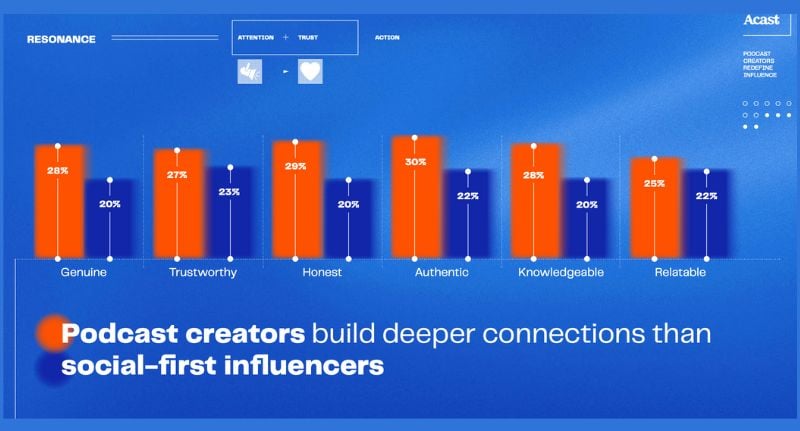
Resonance over reach
For advertisers, the report reads like a validation of the podcast ad model.
Listeners rate podcast advertising as more authentic (45%), memorable (44%) and relevant (43%) than other channels. Ad loads are perceived as “light,” and brands need up to five times fewer exposures before consumers seriously consider them.
That’s backed by behavioural data: 67% of listeners say they’ve purchased something because of a podcast recommendation, while 70% say a host’s endorsement made them consider a brand they hadn’t previously heard of.
Baker believes that brand alignment has created a cultural split – between cheap, personality-led “infotainment” and slower, narrative-driven journalism that still holds power.
“The last 12 months has seen a lot of people writing eulogies for narrative and journalistic podcasting. But weekly shows still work because of the warmth, integrity, impact and authenticity,” he said.
“Ideally, when done well, those narrative podcasts get actual audio or transcripts of what happened… that’s where the journalism kicks in.”

The bottom line
Acast’s data shows that while podcasting’s commercial model matures, its cultural currency continues to climb. Listeners aren’t just tuning in – they’re changing their minds, buying the products, and trusting the voices behind the mic.
For Baker, that’s the lesson traditional media should heed.
“News brands should look at this data and see that the medium works,” he said.
“Instead of retreating from it, they should see an opportunity to re-energise the trust that’s been lost over the past 20 years in traditional media.”
Main image: Podcaster Joe Rogan
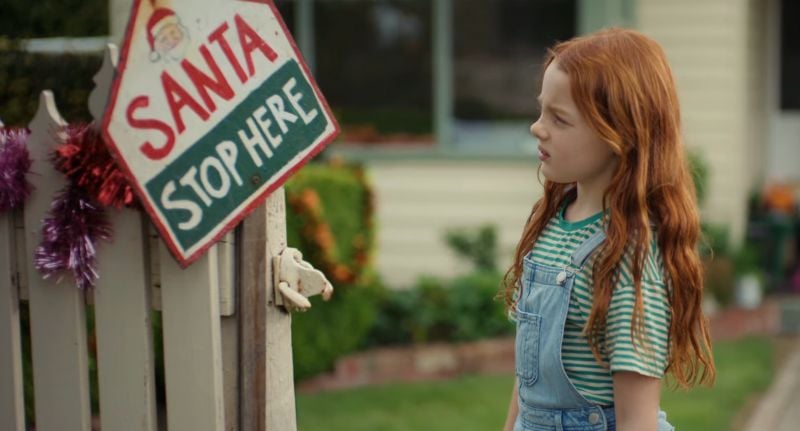
Déjà vu done right: Woolworths re-runs Christmas ad to agency acclaim
Keen-eyed viewers could be forgiven for a sense of déjà vu this festive season – Woolworths has brought back its 2024 Christmas ad Make this Christmas a Classic for a second run in 2025.
The spot, created by M&C Saatchi Group’s bespoke agency Greenhouse Collective, tells the story of a young girl and her rural community who build a giant glowing carrot to guide Santa and his reindeer. Set against the backdrop of a family farm, the ad leans into the enduring themes of generosity, togetherness and homegrown Australian tradition.
While the storyline remains unchanged, its reappearance marks a rare rerun for one of Australia’s biggest retail advertisers.
A Woolworths spokesperson told Mediaweek the retailer made a conscious choice to prioritise investment in price, products and convenience over producing a new big-budget TV commercial this year.
“This Christmas, we’re focused on investing directly where it matters most to our customers,” the spokesperson said.
“Our research shows that while they’re more optimistic this festive season than in recent years, most are still wanting simple, budget-conscious celebrations.
“This year we made the decision to redirect funds from a new large-scale TV advert to further deliver the value and convenience customers expect from us at Christmas.”
The creative double dip hasn’t gone unnoticed in adland – with experts explaining to Mediaweek why recycle might be one of the smartest creative moves yet.
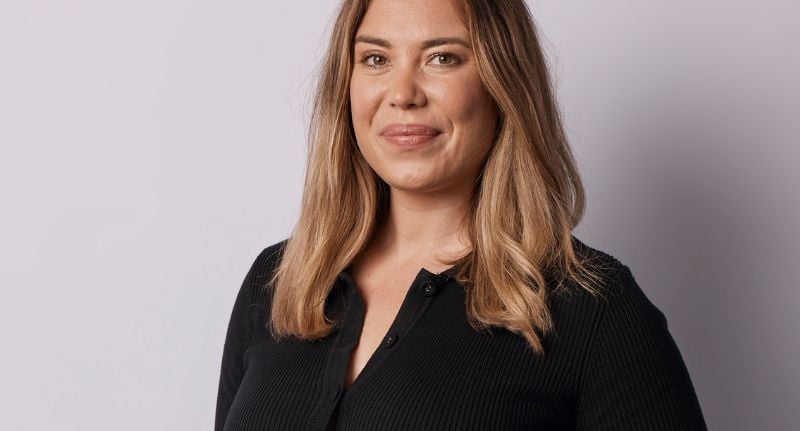
Gretel Maltabarow, Managing Director, Houston
“I think it’s a clever move – people don’t remember an ad played a year ago for such a short period of time. From a brand and positioning perspective, using language like ‘recycling’ is a smart way to create quick positive associations that align closely with their company purpose. Being resourceful, not wasteful, is something all large companies should be mindful of at Christmas time, and this furthers Woolies’ commitment to sustainability.
“Where the challenge – and opportunity – lies is around the vagueness of where the money will actually go. If Woolies drills deeper into the detail and makes the ‘give back’ tangible, whether through detailing the actual dollar value or naming specific charities or initiatives, it will help people believe the promise is authentic and not a cost-saving exercise on Woolies’ part.
“Net-net, I think it was the right decision to make.”
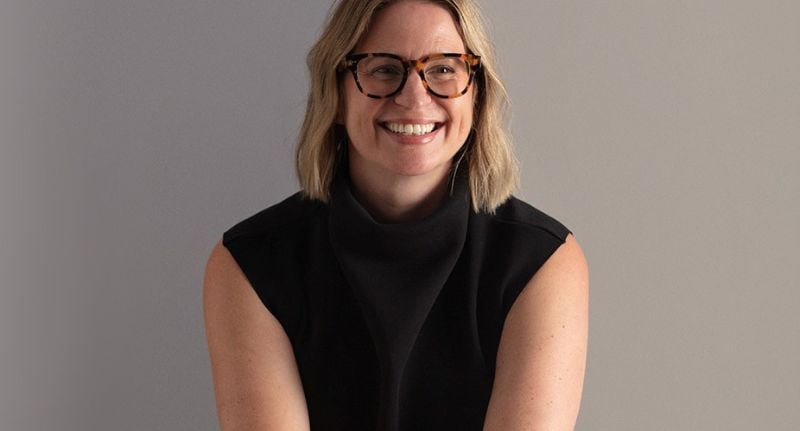
Amber Groves, Creative Strategy Director, Weave
“In the midst of a cost-of-living crisis, consumers are more attuned than ever to the gap between what brands say and what they actually do. Woolworths’ decision to dust off its 2024 Christmas campaign and roll it out again clearly aims to tap into the mood of the nation – effectively ‘tightening their belts’ as a gesture of solidarity. But is this true generosity, or just generous messaging?
“Christmas is one of the few moments when brands can bring genuine lightness and hope to consumers. So if the ‘giving back’ intention truly is altruistic, we need to see it on the Christmas table and under the tree – not just read it in a press release. That would make our hearts grow three sizes and give us some much-needed Christmas magic.”

Alex Forrester, Business Director, TRA
“Woolworths’ decision to re-run last year’s Christmas ad is smart. Even without the cost-of-living rationale, it’s a good idea. In TRA’s long-running Favourite Ads study, we consistently see that creative work continues to live in people’s minds long after media spend stops. In fact, we often observe campaigns being withdrawn just as they begin to climb the list.
“The risk of ‘wear-out’ is vastly overstated; even within the advertising industry, few can recall last year’s festive campaigns – let alone be ‘worn out’ by them. Woolworths has made this play before: when it re-ran Packed with Pride in 2024, it landed back in our top five most-loved ads nationally, eight years after the spot first aired.
“Familiarity is a powerful force in driving mental availability. In this context, repetition isn’t laziness – it’s consistency and good brand building.”
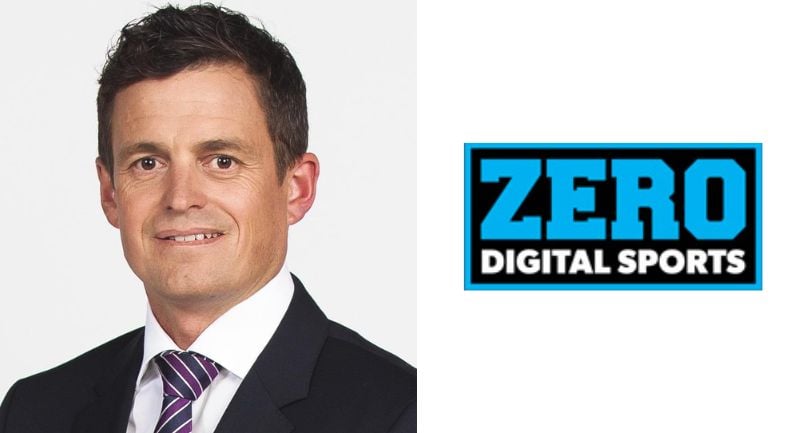
Former Seven reporter Mark Stevens lands top role at Zero Digital Sports
Zero Digital Sports has appointed veteran sports journalist Mark Stevens as managing editor, further bolstering its editorial leadership across its network of independent sports titles.
Stevens joins from Channel Seven, where he served as chief AFL reporter, and brings more than three decades of experience in Australian sports media.
His career has spanned senior editorial roles at the Herald Sun and Triple M, earning a reputation as one of the country’s most respected newsbreakers.
Zero Digital Sports is home to Zero Hanger (AFL), Zero Tackle (NRL) and AllSprt, reaching more than two million Australians each month.
The publisher said Stevens’ appointment marks a major step in its growth and reinforces its commitment to quality journalism.
“Mark brings a level of experience, credibility and leadership that perfectly complements our young and driven editorial group,” said Nick Splitter, general manager, Zero Digital Sports.
“His appointment underlines our commitment to investing in quality journalism and strengthening our voice across Australian sport.”
In his new role, Stevens will lead editorial strategy, mentor emerging journalists, and help elevate content quality across platforms. He will also contribute reporting and analysis, leveraging his extensive contacts across the AFL and wider sporting community.
“Zero Digital Sports is an exciting, fast-growing player in the sports media space,” said Stevens.
“I’m looking forward to helping shape the next phase of its growth and continuing to tell the stories that matter to fans.”
Founded in Melbourne, Zero Digital Sports continues to build its footprint as one of Australia’s fastest-growing independent sports publishers.

Global Brand Experience Agency TBA Group launches in Australia
Global brand experience agency TBA Group has officially arrived in Australia, expanding its footprint with a new office in Sydney and team members based in Melbourne and Brisbane.
The move brings the award-winning company’s international expertise in sport, entertainment, and brand experiences to the region, ahead of Australia’s biggest decade of live global sporting events.
The new TBA Group Australia team will be led by seasoned TBA executives Brendan Furdek (Client Services Lead) and Samantha Findlay (Operations Lead), both of whom have previously worked within the global TBA network.
The expansion roots from the growing demand from global clients active in the Australian market. With over 40 years of experience, TBA Group has delivered high-profile projects for Formula 1, the FIFA World Cup, the Men’s and Women’s Rugby World Cups, and hospitality programs for the Tokyo 2020 and Paris 2024 Olympics.
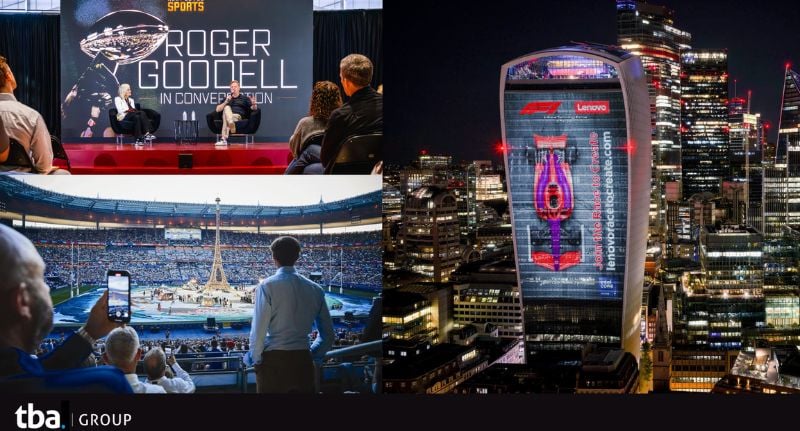
Expanding a global network
The launch adds Sydney to TBA Group’s international homes in London and Los Angeles, marking another milestone in its mission to create world-class live experiences for global brands and rights holders.
Guy Horner, Global CEO of TBA Group, said the expansion comes at a time when live experiences are more valuable than ever and recognises Australia as a vital sports hub.
“We have worked in the Australia market delivering for brand clients over numerous years so it is especially exciting to have established a permanent TBA Australia team.
“We’re looking forward to bringing our global expertise and knowledge working with brands and sports rights holders as Australia plays host to global sporting events including Rugby World Cup 2027 and Brisbane 2032 Olympics.” Horner said
The agency’s entry comes at a pivotal time for Australia’s sports economy, which contributes an estimated $32 billion annually and employs 220,000 people, according to the Australian Sports Foundation.
With the 2027 Men’s Rugby World Cup, 2029 Women’s Rugby World Cup, and Brisbane 2032 Olympic and Paralympic Games on the horizon, the demand for integrated, high-impact event experiences continues to grow.
“Australia lives and breathes sport, and there’s a unique energy here, the crowds, the culture, the passion,” said Brendan Furdek, Client Services Lead of TBA Group Australia.
“We want to channel that into experiences that inspire and spark an emotional connection through storytelling.”
Combining global with local
The TBA Group comprises several specialist agencies, including TBA (sports, brands and entertainment divisions), Velocity Experience (Formula 1 and motorsport specialists), VHE (entertainment and music production), and Top Banana (live corporate communications).
This integrated structure enables the Australian team to deliver a full spectrum of brand and event experiences from stadium activations and fan zones to large-scale conferences and hospitality programs.
“We’re offering the best of both worlds,” said Samantha Findlay, Operations Lead.
“An Australian team that understands the local sports and live experience heartbeat, backed by world-class global execution experience and specialist expertise.
“From stadium spectaculars and fan zones, brand activations and large-scale conferences, we’re ready to bring a new standard of global expertise and local authenticity to every level of the game.”
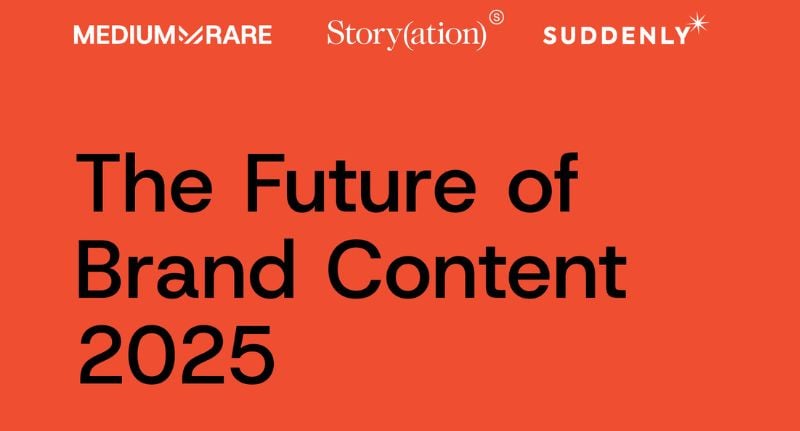
Medium Rare signals the end of ‘rented attention’ as brand content becomes the new growth engine
Brand content is no longer the supporting act. Instead, it’s now becoming the engine of customer growth, loyalty and conversion, according to new research from News Australia’s content agencies Medium Rare, Suddenly and Storyation.
The Future of Brand Content report, produced with Crowd DNA, shows more than half of Australians now engage with brand content daily – up 11% since 2021 – with 72% going on to purchase after reading or watching it.
For Medium Rare managing director Nick Smith, the shift has been obvious inside client boardrooms.
“When I took over Medium Rare in 2021, clients already valued content, but they saw it as something you got after you shopped – like picking up that Coles magazine at the checkout,” he told Mediaweek.
“What’s changed is brands now need content before, during and after the decision – it’s how they earn clarity, trust and emotional connection.”
Smith said early research confirmed something marketers often underestimated: consumers already know when they’re engaging with branded content from trusted companies. “Back then, consumers were saying, ‘we know this is branded – and we like it when it’s clear and useful.’ That was the turning point.”

Nick Smith
From awareness to advocacy, content now carries the funnel
The study positions content as core business utility, not a campaign layer, with:
• 68% saying it helps product discovery.
• 60% saying it influences final purchase.
• 81% feeling more confident buying after consuming it.
• 77% avoiding customer service thanks to useful content.
Performance media fatigue and search volatility are accelerating the rebalancing, with Smith noting brands “want to own the relationship again, not rent it from an algorithm.”
He added, “In a noisy world, if a consumer loves you, they come back. They’re looking for clarity and humanity, not volume.”
Multi-dimensional brands are winning attention (and affection)
The report points to a shift from single-tone brand voices to multi-dimensional behaviours – content that educates, entertains and empathises.
“Four years ago, content sat in comms,” Smith said.
“Today, CMOs own it because they realise audiences don’t want a one-note brand. Sometimes you need to be serious. Sometimes you should have a laugh about DIY fails on TikTok. That’s how you build a real brand world.”
That versatility is particularly visible in retail.
“Australians love going to Bunnings, to Coles. When those brands give you advice, inspiration, or a laugh – across platforms – it deepens trust. It’s not just ‘buy this’, it’s we’re here with you.”
Trust, AI and the new consumer fluency
Post-pandemic scepticism and the rise of AI-generated content have sharpened scrutiny and made human tone a strategic differentiator.
“Trust in institutions and media was weakening in 2021- and it’s only accelerated,” Smith said. “Consumers are saying, ‘we can critically analyse this – don’t sell to us, tell us.’ Advertising sells. Content explains.”
That clarity expectation, he said, has become a loyalty trigger.
“When you invest in your audience with content that’s genuinely useful and feels human, you build a cohort who backs you when the big paid campaign lands.”
Owning the narrative in a volatile landscape
Smith sees content as a hedge against platform shifts and paid-media turbulence.
“It’s not a volume game,” he said. “It’s value and clarity. Brands who show up like a friend, reliably, helpfully, with personality – are the ones people return to, even when the rest of the internet feels overwhelming.”
Medium Rare CEO Mike Connaghan and Smith will unpack the findings in a webinar on Wednesday 12 November. You can register here.
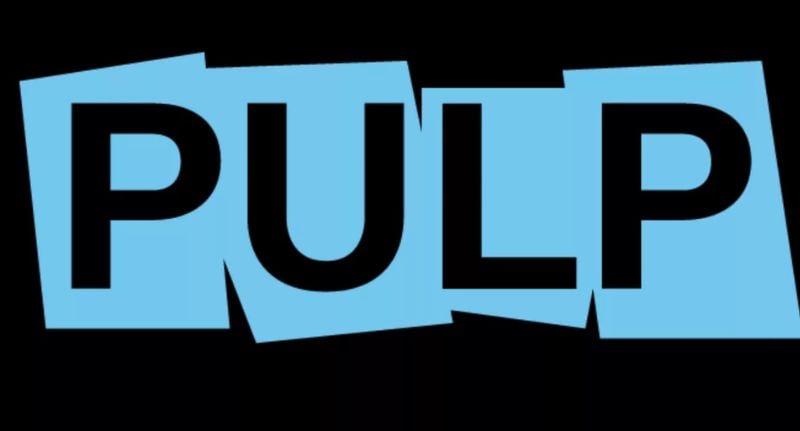
Pulp lands on Foxtel: cult, controversy, conversion
Foxtel has launched PULP, a channel that will focused on cult and controversial films.
The curated line-up spans genres including thrillers, cult classics, and daring dramas. Titles include Showgirls, The Texas Chainsaw Massacre and Winnie the Pooh: Blood and Honey.
A Foxtel spokesperson said the launch expands the company’s movie offering by creating a destination for “cinema that stands out for its edge, originality and cultural impact.”
According to Foxtel, the launch of PULP is part of the Foxtel Group’s wider investment strategy to strengthen its entertainment offering through new channels, app integrations and premium content partnerships.
The move is designed to broaden appeal for film lovers across both Foxtel and Binge.
PULP is broadcast in High Definition on Channel 415 within the Foxtel Movies Tier. Viewers can also access the channel via Foxtel Now, Foxtel Go, Business IQ, and Binge, ensuring reach across traditional and digital viewing environments.

Uncomfortable Growth® Uncut. Season 4, Episode 7 – Reg Raghavan
In the latest episode of Uncomfortable Growth® Uncut, Rowena Millward welcomes Reg Raghavan, CEO of CulturalPulse, for a deep dive into the complexities of cultural identity and personal growth. Reg’s unique perspective as the son of Indian migrants in Australia offers listeners a rare glimpse into the challenges and triumphs of navigating dual cultures.
Reg shares how he found himself straddling two worlds, shaped by his parents’ Indian heritage and the Australian landscape. He reflects on how these experiences have influenced his identity, often leading to uncomfortable growth moments that forced him to confront his assumptions and beliefs. Reg shares poignant stories from his childhood, illustrating the stark contrasts between his home life and that of his peers, highlighting the challenges of growing up in a multicultural environment.
Throughout the episode, Rowena and Reg explore the significance of bridging cultural gaps, particularly in the context of health equity and community engagement. Reg’s passion for storytelling and his commitment to understanding diverse perspectives shine through as he discusses his work at Cultural Pulse, where he aims to create meaningful connections between government initiatives and the communities they serve.
My three favourite quotes from Regs’ story are:
“Your own limitation is you.”
“Everything that reflects externally is some reflection of yourself internally.”
“Different cultures have a perspective on the world, which is unique.”
Tune in to this enlightening conversation and discover how Reg Raghaven’s journey can inspire your own path of growth and understanding.
The world doesn’t need more stories of success; it needs honest conversations about hard challenges, vulnerability, and proof that trials can ultimately become triumphs.
That’s why the Uncomfortable Growth® Uncut podcast was born. It’s a reminder that struggle and success are intrinsically linked, that growth is rarely easy, and that the moments we feel most uncomfortable are where our greatest breakthroughs lie.
Media
Foxtel leans into the odd and iconic with new Pulp channel
TV Blackbox’s Kevin Perry writes the channel will sit on Channel 415 in the Movies tier, it is also streaming via Foxtel Now, Foxtel Go, Business iQ and Binge.
AI
NSW flags AI-fuelled myths on road rules
The Guardian’s Josh Taylor writes that Google even surfaced the dud advice in a search snippet, before the department stepped in.
Entertainment
K-Pop Demon Hunters sequel locked in
As Variety’s Rebecca Rubin reveals, the only catch is timing. The sequel is currently slated for 2029, because animation plus K-pop chaos takes time.

